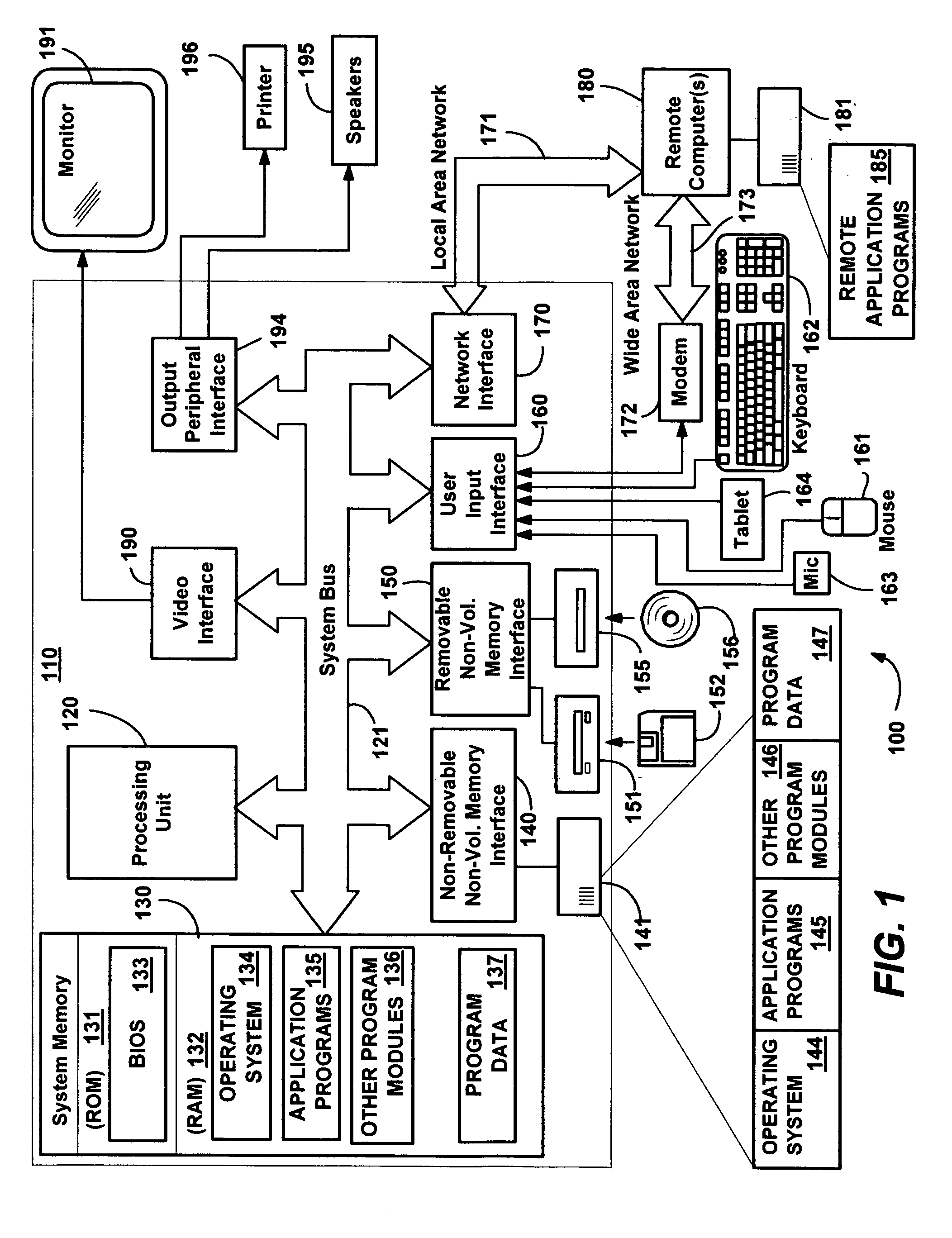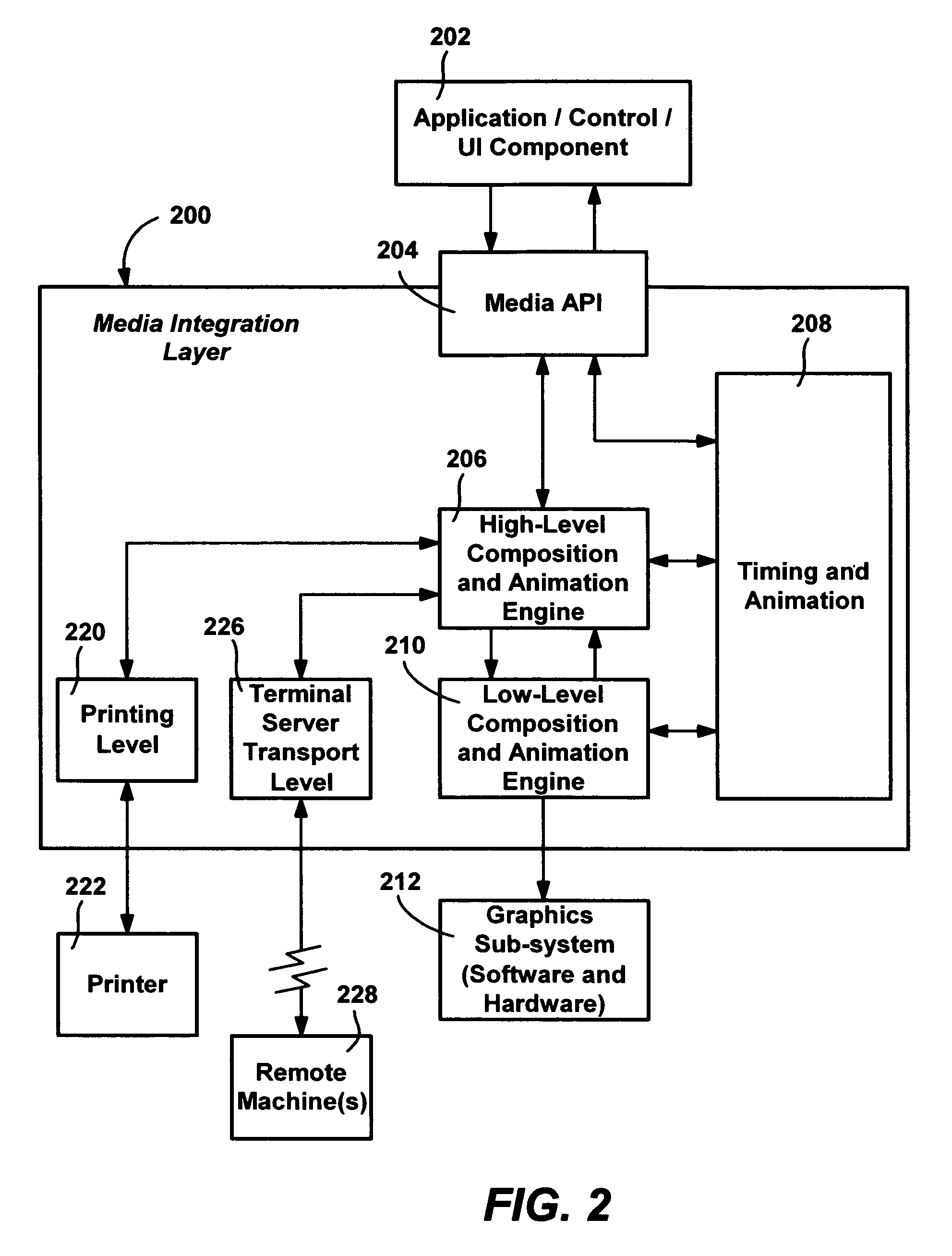Exposing various levels of text granularity for animation and other effects
a text granularity and animation technology, applied in the field of computer systems, can solve the problems of inability to dynamically receive, tedious and limiting the scenarios in which animations and other text effects can be applied, and individual characters spinning separately was not something that could be easily accomplished
- Summary
- Abstract
- Description
- Claims
- Application Information
AI Technical Summary
Benefits of technology
Problems solved by technology
Method used
Image
Examples
example layered
Architecture
[0030] One aspect of the present invention is based upon the ability to leverage a smooth, complex animation mechanism that may be loaded onto computer systems. One such mechanism, as generally represented in FIG. 2, is incorporated into a media integration layer architecture 200. An application program, control or other similar higher-level program code (e.g., a user interface of an operating system component) 202 accesses the media integration layer architecture 200 via a set of application programming interfaces (APIs) 204 or the like, to access (write or read) graphical information. Note that although many of the examples described herein will refer to an application program interfacing with the APIs, it is understood that other higher-level program code and components (e.g., a user interface of the operating system) will also be able to interface with the lower-level components described herein. As such, any reference to such higher-level program code, whether refer...
PUM
 Login to View More
Login to View More Abstract
Description
Claims
Application Information
 Login to View More
Login to View More - R&D
- Intellectual Property
- Life Sciences
- Materials
- Tech Scout
- Unparalleled Data Quality
- Higher Quality Content
- 60% Fewer Hallucinations
Browse by: Latest US Patents, China's latest patents, Technical Efficacy Thesaurus, Application Domain, Technology Topic, Popular Technical Reports.
© 2025 PatSnap. All rights reserved.Legal|Privacy policy|Modern Slavery Act Transparency Statement|Sitemap|About US| Contact US: help@patsnap.com



